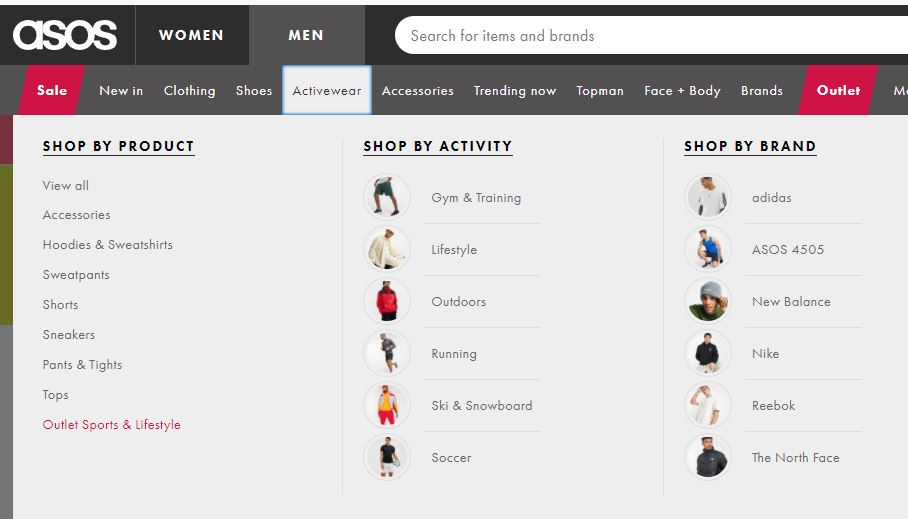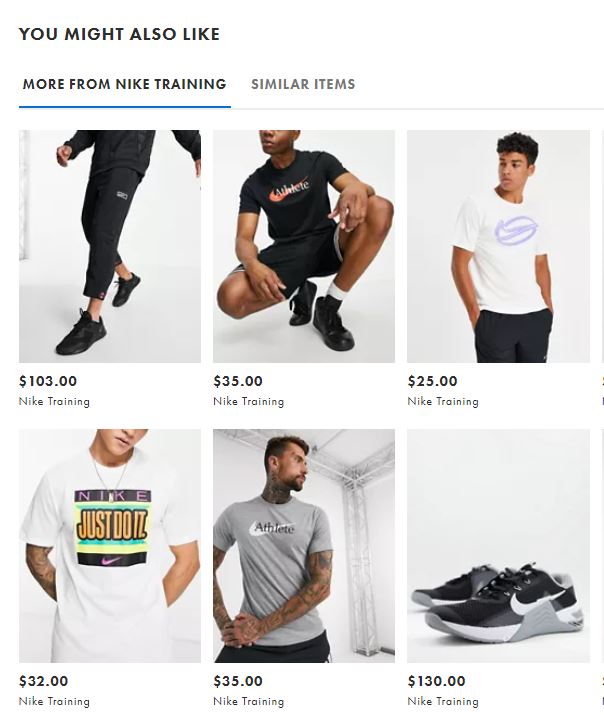Show:
The ultimate SEO checklist for eCommerce
Have you recently opened up an eCommerce website or already have one and are looking to quickly check through the most important SEO elements for eCommerce?
Well, in this article, you’ll get a quick-and-easy rundown of everything to MUST to have on your eCommerce website to succeed in SEO.

This isn’t one of those generic checklists that have 100 different things on there that aren’t important and end up wasting your time. I’m only going to be including things that will move the needle in your SEO efforts, the exact same things I use to rank my client’s websites at my SEO agency, Levelu.
By having all of these elements in place, you will dramatically improve your rankings as well as your conversions. Here are the 8 most important things you need to check off on your website:
- Analytics and Data tools Set Up
- Speedy and Mobile friendly
- Crawl-budget optimized
- Optimal website structure
- Remove duplicate content
- Nail your Onpage SEO
- Don’t forget about Off-Page SEO
- Work on your CRO
1. Analytics and Data tools Set Up
Going all-in with your eCommerce SEO without a plan to measure, analyze and optimize results would be like going to a gunfight with a knife. You might be able to make some progress here and there, but over time, you’ll get squashed like a bug by your competitors.
Here are some must-have data tools for your eCommerce website:
- Setup Google Search Console. This one is fundamental as it gives a lot of information about your website.
- Setup Google Analytics. No reason not to have this. As an eCommerce website, you want to set up conversion goals and assign a dollar value to each goal, which should be your typical cart value.
- Heat map tracking. This one is killer for optimizing your conversions down the road. Tools like Hotjar or Crazyegg make it easy to tell how your visitors are interacting with your website.
- Advertising pixels. You might be doing SEO now, but what will you be doing later? By using advertising pixels from sites like Facebook or other social media websites, you can gather a mountain of data on your customer base. You can then use this for Facebook ads and retargeting, which packs a lot of value as you already know these people are interested in your products.

2. Speedy and mobile-friendly
Speed and being mobile-friendly are two very important ranking factors that Google will judge your site with.
On top of that, having both of these down skyrockets your user experience which you will notice in higher conversions and better on-page metrics(which also boosts your SEO)
I recommend using tools like PageSpeedInsights and working on the suggestions laid out there until you have at least an 80 on both mobile and desktop(however aim for 90).
3. Crawl-budget optimized
Since eCommerce websites tend to be massive, you are likely to face crawling and indexing issues down the line if don’t already.
Obviously, you want to have your important pages indexed as that’s where the money comes from.
Here is a quick rundown of getting this fixed on your website:
- Don’t index every page. There are some pages on your website that do not need to be found on organic search. Things like thank you pages or customer checkouts. Removing these with a no-index robots tag will give more crawls to your important pages.
- Remove duplicate pages
- Remove low-quality pages
To find these crawl-budget-murdering pages, I recommend you use a tool like Cruft Crusher.
4. Optimal Website Structure
You need to have your website organized in an intuitive way for both your users and Google’s crawlers.
From the user’s perspective, it’s much easier to find something and buy it if they can simply guess where to find it instead of going on a long goose chase for something that might not exist.
From Google’s perspective, having your pages well organized and within specific categories helps Google with a few things:
- Crawling becomes easier as everything is interlinked under a category.
- Google will understand what your website is about easily, giving you topical authority.
- Topical authority is a ranking factor, which makes everything within that category rank faster with much less effort.
The easiest way to organize your content is by having key categories on your navigation bar, and subcategories branching off from the key categories.
Here is what that looks like:

As you can see, they split from their main page into mens/activewear/ and then whatever category the user wants to select. They also do the same things with branding.
The power of these structures is that they contain relevance which again, boosts topical authority. However, there’s an even bigger benefit that comes from more advanced SEO.
If you look closely in any particular category, you will see that they also link internally within the same category using a “You might also like” section.

This allows link juice to flow naturally through the website, which means that if one page gets a backlink, all your pages within that category also benefit from it.
This change alone will do wonders for your SEO.
5. Remove duplicate content
Duplicate content is a problem at all levels of the ranking process. Here is how it murders your possibility of getting on page 1:
- Google hates duplicate content. You don’t want Google to hate your website as well
- Google sends fewer crawl spiders to websites with duplicate content. Less crawling means less indexing.
- Google will refuse to index content that is duplicate
- Your duplicate content won’t rank as well if you are plagiarising other work. And if your duplicates are internal, you risk keyword cannibalization.
So there are definitely huge negatives with Duplicate content, but the thing is, it can be found everywhere on an eCommerce website. From product descriptions to
I recommend using the tools Siteliner and Copyscape to find your most duplicated content. Keep in mind that Google is lenient with some duplicate content, but if your duplicate percentage is above 30, then you’ve got to make some edits.
If you would like a deeper case-by-case basis for fixing duplicate content, see this guide.
6. Nail Your On-Page SEO
Your On-Page SEO game should always be at 100%. It’s the only part of SEO that you can directly control and getting these free points will give you easy boosts to your organic presence.
Here is a quick On-Page checklist:
- Keywords in Url, Title, Description, H1(only 1 h1 by the way), H2, and in the body. I would put the primary keyword in the first 3 and in the other sections, I would use variations. This way you cast a wider net.
- Images optimized. Here you want speed, proper naming, alt tags, and originality. Having original images is critical because image SEO is a real thing and can provide tons of traffic to an eCommerce website. The thing is, Google does not rank duplicate images, so you want to make it original by modifying the colors, adding some text, or otherwise altering the base image.
- Semantic keywords included. You want to have semantic phrases in your writing as it clues Google into what your page is about.
- Have a word count similar to the top 3 on Google. They are up there for a reason, so use them to reverse-engineer success.
- Add schema markup. Here is a free tool for that.
- Use breadcrumbs. This helps UX tremendously.
- Internal linking. We covered this in #4.

7. Don’t Forget About Off-Page SEO
Links are still a massive ranking factor and I doubt they’ll be going away anytime soon. It’s a simple equation, quality content+on-page SEO+high quality, relevant links= page 1 rankings.
The key thing you need to realize about backlinks is that not all links are created equal and quality trumps quantity any day of the week.
This means that going after that backlink from an industry blog that gets tons of traffic is far better than building endless comments, social media, and forum links.
Not only do your links pass on more juice because they are coming from a reputable site that
- Get’s traffic
- Likely has quality backlinks itself
- Is relevant
But you also future-proof yourself against a Google algorithm update that will tear your spammy links to shreds.
8. Work on your CRO
Last but not least, work on increasing your conversions.
Without converting the traffic you generate into paying customers, you might as well kiss the ROI you’d get from SEO goodbye.
We do SEO to gain more customers. The traffic it brings us is merely a vehicle for attaining those customers.
Therefore, you should always work on improving your conversion rate as that is what will move the needle.
If you’re not sure where to start, how about you look at the data you’ve gathered from all the tools you’ve set up in stage 1 of this checklist.
Oftentimes, just by knowing how your visitors are behaving, you’ll be able to figure out adjustments that cater to their needs.
Conclusion
SEO for eCommerce can be complex given their large size and also their tendency to run on thin pages.
However, once you nail down these 8 key features, you’ll notice a surge in organic traffic and you’ll have set yourself up for massive eCommerce success.

 Return to Previous Page
Return to Previous Page








